

Sikkim, located in northeastern India, is one of the country's most beautiful and environmentally conscious states. It is famous for its breathtaking Himalayan landscapes, Buddhist monasteries, and rich cultural heritage. The state has a unique history as a former Buddhist kingdom before merging with India in 1975. From the stunning Tsomgo Lake to the sacred Rumtek Monastery, Sikkim offers a perfect blend of natural beauty, spirituality, and adventure. Its festivals, especially Losar and Saga Dawa, bring people together in celebration and devotion, while its commitment to organic farming makes it a model for sustainable development.

Sikkim stands as a testament to a unique Himalayan kingdom with a recorded history spanning over centuries. The state was ruled by the Chogyal dynasty for 333 years, whose legacy continues to shape Sikkimese identity and pride. The Namgyal dynasty of Sikkim was established in 1642 when Phuntsog Namgyal was consecrated as the first Chogyal (religious king) by three revered Nyingma lamas.
The Chogyal era was characterized by a unique blend of Tibetan Buddhism and indigenous Lepcha traditions. Under rulers like Tensung Namgyal and Chador Namgyal, Sikkim expanded its territory and established important religious institutions. The kingdom maintained its sovereignty through strategic alliances and its remote mountainous location.
Sikkim's history is deeply intertwined with Tibetan Buddhism. The state became a refuge for the Nyingma school of Tibetan Buddhism, with monasteries like Pemayangtse, Rumtek, and Tashiding becoming important centers of learning and spirituality. These monasteries not only preserved religious traditions but also served as centers of administration and culture.
The British colonial period saw Sikkim becoming a British protectorate, though the Chogyals continued to rule internally. This period also saw the settlement of Nepalis in Sikkim, adding to the state's ethnic diversity. The kingdom maintained its distinct identity while navigating complex relationships with British India, Tibet, and Bhutan.
In 1975, following a referendum, Sikkim became the 22nd state of India, ending the Chogyal monarchy. This peaceful transition marked a new chapter in Sikkim's history while preserving its unique cultural heritage. Today, Sikkim takes pride in being India's first fully organic state and a model of environmental conservation.
Today, Sikkim takes immense pride in this glorious heritage. The monasteries built during the Chogyal period are not just places of worship but living monuments that continue to be centers of cultural and social life. The values of environmental conservation, cultural preservation, and peaceful coexistence established by these traditions are deeply embedded in Sikkimese society.
The legacy of Sikkim's royal past is not just historical; it continues to inspire contemporary Sikkimese identity. The state's commitment to organic farming, environmental protection, and sustainable tourism reflects the traditional respect for nature that has always been part of Sikkimese culture. The administrative systems, religious institutions, and cultural practices developed during the Chogyal period continue to influence modern Sikkim.
Sikkim is known for its remarkable linguistic diversity despite being India's second smallest state. The state's language landscape reflects its ethnic mosaic, with multiple communities preserving their distinct languages and scripts while communicating in common tongues.
The official languages of Sikkim are Nepali, which is the lingua franca, and English, which is used in government, education, and administration. However, the state recognizes and protects all its indigenous languages.
The languages of Sikkim reflect its unique multicultural identity and historical continuity. While Nepali serves as the common language, the indigenous languages add to Sikkim's linguistic richness. This linguistic diversity truly mirrors Sikkim's spirit of unity in diversity while maintaining distinct cultural identities.
Sikkim is a state of vibrant festivals, where Buddhist traditions, Hindu celebrations, and indigenous rituals come alive. Festivals here are deeply rooted in religious traditions, agricultural cycles, and ethnic identities, reflecting the state's rich multicultural heritage.
Losar is the most important festival for the Buddhist communities of Sikkim, marking the Tibetan New Year. It is a fifteen-day festival filled with religious ceremonies, cultural performances, and family gatherings that express hopes for peace, prosperity, and happiness in the coming year.
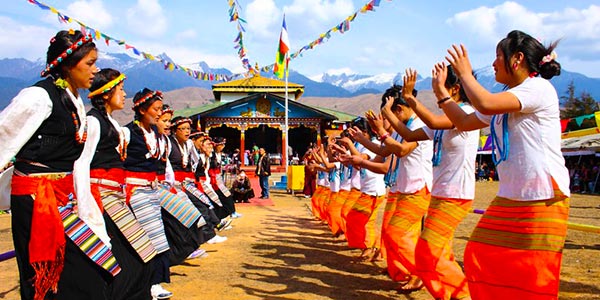
Losar is not just a festival but a celebration of Sikkim's spiritual heritage, cultural identity, and community values. It brings families and communities together, spreading the message of peace, prosperity, and harmony. The sight of monasteries illuminated with butter lamps and the sound of chanting monks represent the true essence of Sikkimese pride.
Saga Dawa, also known as the Triple Blessed Festival, is one of the most sacred Buddhist festivals in Sikkim. It commemorates the birth, enlightenment, and parinirvana (passing away) of Lord Buddha. This month-long festival is observed with great devotion by the Buddhist community across Sikkim.

The festival reaches its climax on the full moon day of the fourth Tibetan month (usually May or June), when processions carrying holy texts and relics circumambulate monasteries and sacred sites. Devotees engage in acts of merit, such as freeing captive animals, making offerings at monasteries, and practicing vegetarianism.
Saga Dawa is not just a religious observance but a celebration of Sikkim's spiritual heritage and universal values. It brings together people from diverse backgrounds in acts of devotion and compassion, reflecting the state's commitment to peace, environmental conservation, and religious harmony.
Dasain, known as Durga Puja in other parts of India, is the most important festival for the Hindu Nepali community in Sikkim. This fifteen-day festival celebrates the victory of Goddess Durga over the demon Mahishasura, symbolizing the triumph of good over evil.
Dasain in Sikkim is not just a Hindu festival but a celebration of the state's cultural diversity and religious harmony. From family reunions to community feasts, the festival brings people together in a spirit of joy, devotion, and mutual respect, reflecting Sikkim's unique identity as a multicultural society where different traditions coexist peacefully.
The festivals of Sikkim showcase its deep spiritual roots, cultural diversity, and communal harmony. From the Buddhist celebrations of Losar and Saga Dawa to the Hindu festivals of Dasain and Tihar, and the indigenous festivals of various communities, every festival reflects the state's spirit of unity in diversity, environmental consciousness, and pride in its heritage.

Sikkim may be India's second smallest state, but its cities and towns are rich in natural beauty, cultural heritage, and unique character. Each urban center in Sikkim offers a distinct experience, from bustling capital cities to peaceful mountain towns, all set against the backdrop of the majestic Himalayas.
Gangtok, the capital city of Sikkim, is popularly known as the "Gateway to Sikkim" because of its strategic location and administrative importance. Perched at an altitude of 1,650 meters, it serves as the economic, cultural, and political hub of Sikkim. Gangtok beautifully balances traditional Sikkimese culture with modern development, making it one of the most charming hill stations in India.



Rumtek Monastery, also known as the Dharma Chakra Centre, is one of the most significant Buddhist monasteries in Sikkim and the seat of the Karma Kagyu school of Tibetan Buddhism. Located 24 kilometers from Gangtok, this magnificent monastery offers a glimpse into Sikkim's rich spiritual heritage.
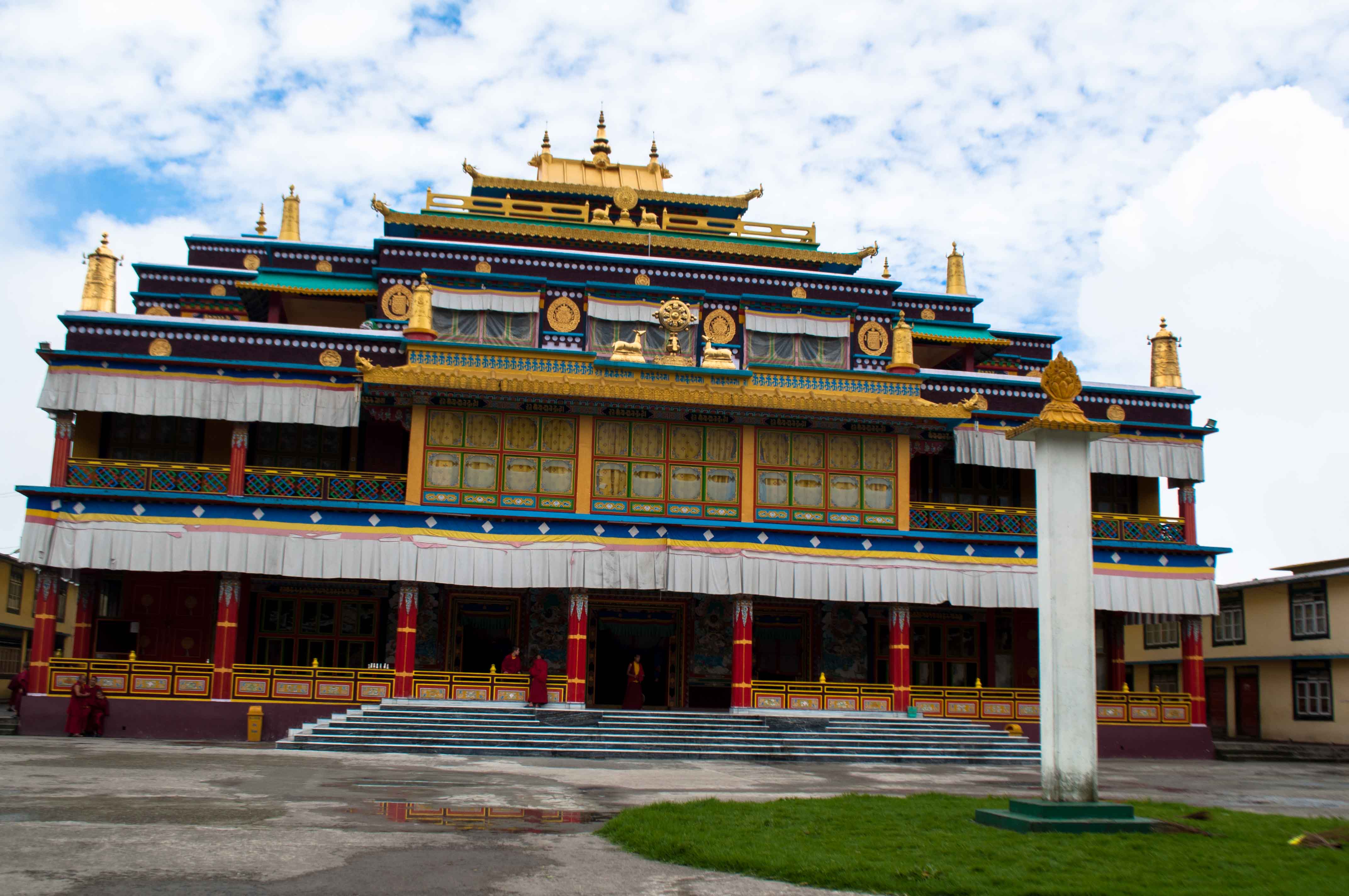
The monastery was originally built in the 16th century by the 9th Karmapa Wangchuk Dorje, but the current structure was constructed in the 1960s under the guidance of the 16th Karmapa. The architecture follows traditional Tibetan style with intricate murals, thangkas (Buddhist paintings), and beautiful woodwork. The main shrine hall houses a golden stupa containing relics of the 16th Karmapa.
Rumtek Monastery is not just a place of worship but also an important center for Buddhist studies. It has a monastic college where monks study Buddhist philosophy, meditation, and rituals. The monastery also preserves many precious religious artifacts, including the Black Crown of the Karmapas.
What makes Rumtek unique is its international significance in the Buddhist world. It serves as the main seat of the Karma Kagyu lineage outside Tibet and attracts pilgrims and tourists from around the world. The monastery comes alive during important Buddhist festivals, especially during the Kagyed Dance festival.
In conclusion, Rumtek Monastery is much more than a religious site—it is a living institution that preserves Sikkim's Buddhist heritage and promotes spiritual learning. It stands as a testament to Sikkim's role as a custodian of Tibetan Buddhist traditions and continues to inspire visitors with its spiritual atmosphere and architectural beauty.

Tsomgo Lake, also known as Changu Lake, is one of the most famous natural attractions in Sikkim, located about 40 kilometers from Gangtok at an altitude of 12,400 feet. This glacial lake is considered sacred by the local people and offers breathtaking views of the surrounding Himalayan mountains.
The name 'Tsomgo' means 'source of the lake' in the Bhutia language. The lake remains frozen during the winter months and comes alive with vibrant colors during spring and summer when the surrounding rhododendron forests bloom. The lake is about 1 kilometer long and 15 meters deep, fed by melting snow from the surrounding mountains.
Tsomgo Lake holds religious significance for both Buddhists and Hindus. Local Buddhists believe that the lake can predict the future - the color of the water is said to change according to the state of affairs in the region. Hindu devotees consider the lake sacred and associate it with Lord Shiva.
Besides its natural beauty and spiritual significance, Tsomgo Lake is also the starting point for the trek to the Indo-China border at Nathu La Pass. The area around the lake has been developed for tourism with viewpoints, souvenir shops, and yak rides, allowing visitors to experience the majestic beauty of this high-altitude lake.
In conclusion, Tsomgo Lake is much more than a tourist attraction—it is a natural wonder that represents Sikkim's pristine environment and spiritual heritage. It continues to captivate visitors with its stunning beauty and remains an essential part of the Sikkimese identity and tourism experience.
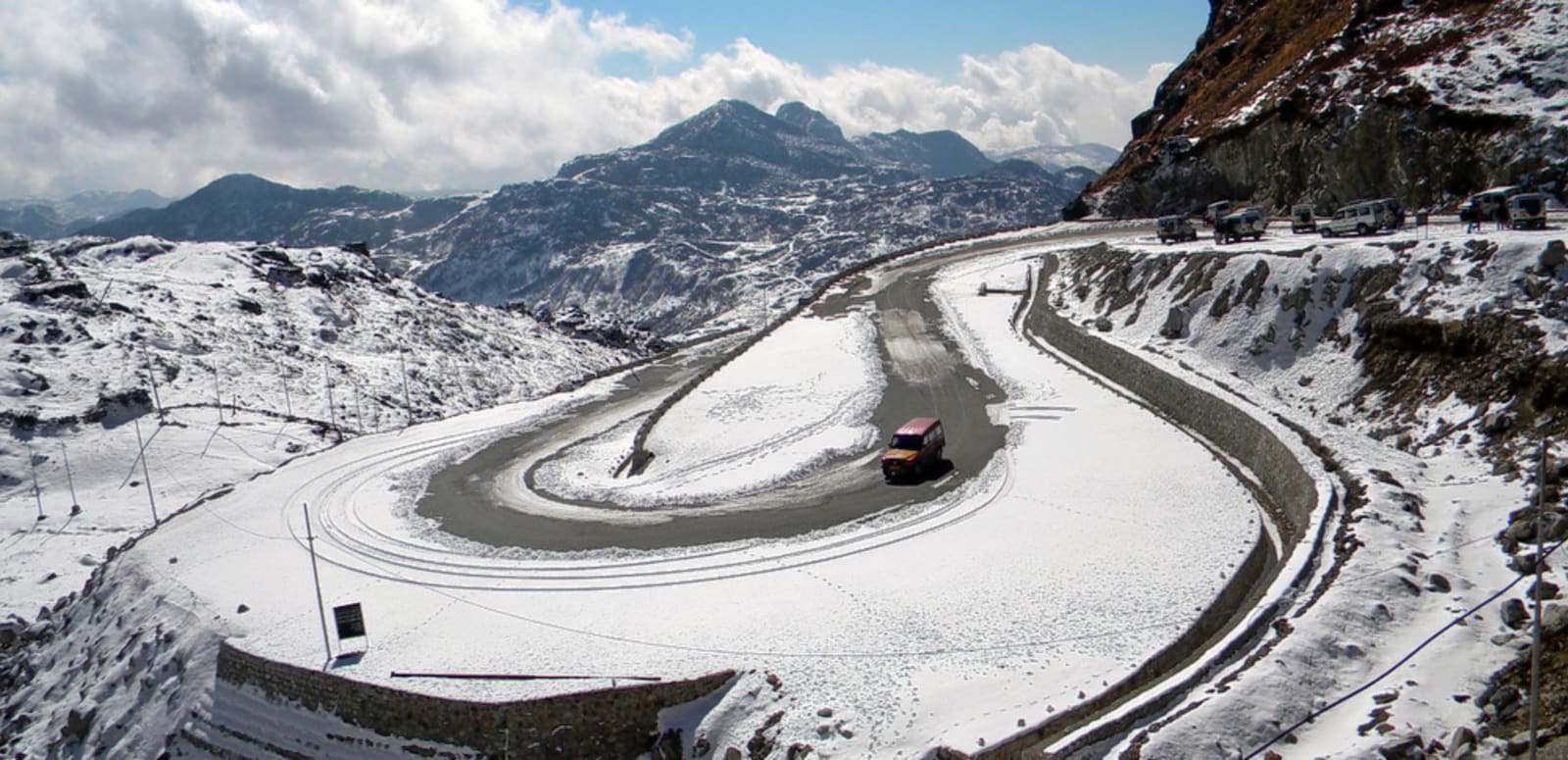
Nathula Pass, located on the Indo-China border at an altitude of 14,140 feet, is one of the highest motorable passes in the world and a site of great historical and strategic importance. This mountain pass connects Sikkim with Tibet and was part of the ancient Silk Route.
The pass was closed after the 1962 Sino-Indian War and remained shut for 44 years until it was reopened in 2006 for limited trade between India and China. Today, Nathula is not only an important trade route but also a popular tourist destination, though visitors require special permits to visit this sensitive border area.
Nathula Pass offers stunning panoramic views of the Himalayan mountains and is surrounded by rugged, snow-covered landscapes for most of the year. The Indian Army maintains a strong presence here, and visitors can see soldiers guarding the border in challenging high-altitude conditions. The pass features a memorial to the Indian soldiers who died in the 1962 war and a small temple dedicated to Baba Harbhajan Singh, a revered Indian soldier.
Beyond its strategic importance, Nathula represents the complex relationship between India and China and serves as a symbol of peaceful cooperation through border trade. The pass is open for trade from Monday to Thursday, and Indian and Chinese traders exchange various goods, contributing to the local economy.
In conclusion, Nathula Pass is more than just a border crossing—it is a living symbol of Sikkim's strategic importance, historical significance, and natural grandeur. It offers visitors a unique opportunity to experience a sensitive international border while appreciating the bravery of soldiers who guard India's frontiers in extreme conditions.
Hanuman Tok is a beautiful temple dedicated to Lord Hanuman, located on a hilltop near Gangtok at an altitude of 7,200 feet. Managed by the Indian Army, this temple offers spectacular panoramic views of Gangtok city and the surrounding Himalayan ranges, making it both a spiritual and visual delight for visitors.
The temple is believed to have been visited by Lord Hanuman during his journey to the Himalayas in search of the Sanjeevani herb to heal Lakshmana. According to local legend, Hanuman rested at this spot, which is why it is called Hanuman Tok (Tok means 'resting place' in the local language). The temple complex includes the main shrine, a meditation center, and beautifully maintained gardens.
What makes Hanuman Tok unique is its peaceful atmosphere and breathtaking views. On clear days, visitors can see the entire Gangtok valley, the Kanchenjunga range, and even parts of the Tibetan plateau. The temple is particularly popular during sunrise and sunset when the Himalayan peaks glow with golden light.
The temple complex is maintained with military precision by the Indian Army, which adds to its clean and organized environment. The army also runs a small cafeteria that serves refreshments to visitors. The approach road to the temple passes through beautiful forests of rhododendron and magnolia, adding to the spiritual journey.
Today, Hanuman Tok is not just a religious site but also a popular viewpoint and recreational spot for both tourists and locals. It represents the religious harmony of Sikkim, where Hindu temples coexist peacefully with Buddhist monasteries, reflecting the state's multicultural character.
In conclusion, Hanuman Tok is more than just a temple—it is a symbol of Sikkim's religious diversity, natural beauty, and peaceful coexistence. It continues to attract visitors seeking spiritual solace, natural beauty, and panoramic Himalayan views, making it an essential part of the Gangtok experience.
The Flower Exhibition Centre in Gangtok is a beautiful showcase of Sikkim's incredible floral biodiversity, particularly its famous orchids. Located near the White Hall complex, this center highlights why Sikkim is often called the 'Orchid Paradise of India' and demonstrates the state's commitment to environmental conservation.
The center features a wide variety of orchids, including many rare and endangered species that are native to Sikkim. With over 500 species of orchids, Sikkim has one of the highest orchid diversities in India, and this center provides a glimpse into this rich botanical heritage. The exhibition includes both naturally growing orchids and carefully cultivated hybrids.
Besides orchids, the center also displays other flowering plants that are typical of Sikkim's diverse ecosystems, from subtropical valleys to alpine meadows. The exhibition changes with the seasons, showcasing different flowers as they bloom throughout the year. The annual flower show, usually held in spring, is a major attraction that draws visitors from across the country.
The Flower Exhibition Centre is not just a tourist attraction but also an educational resource that promotes awareness about plant conservation. It demonstrates Sikkim's commitment to environmental protection and sustainable development, values that are deeply ingrained in the state's culture and policies.
In conclusion, the Flower Exhibition Centre is more than just a display of beautiful flowers—it is a living testament to Sikkim's rich biodiversity and environmental consciousness. It represents the state's identity as India's first organic state and its commitment to preserving its natural heritage for future generations.
Gangtok is more than just a city — it is the heart and soul of Sikkim. From its ancient monasteries to its modern infrastructure, from spiritual sites to environmental initiatives, Gangtok represents the perfect blend of tradition and modernity. Truly, Gangtok lives up to its name as the Gateway to Sikkim and as a model of sustainable development in the Himalayas.
Pelling, located in western Sikkim, is a picturesque town famous for its breathtaking views of the Kanchenjunga range. Situated at an altitude of 2,150 meters, Pelling has emerged as one of Sikkim's most popular tourist destinations, offering a perfect blend of natural beauty, adventure, and cultural experiences.

Pemayangtse Monastery, located near Pelling, is one of the oldest and most important monasteries in Sikkim, belonging to the Nyingma school of Tibetan Buddhism. The name 'Pemayangtse' means 'Perfect Sublime Lotus' in Tibetan, reflecting the monastery's spiritual significance.
The monastery was established in 1705 by Lhatsun Chempo, one of the three revered lamas who consecrated the first Chogyal of Sikkim. The original structure was expanded over the centuries, with the current building dating back to the early 20th century. The monastery follows traditional Tibetan architecture with intricate woodwork, colorful murals, and beautiful statues.
The most remarkable feature of Pemayangtse Monastery is the seven-tiered wooden model of Guru Rinpoche's heavenly abode, known as Zangdogpalri. This masterpiece was created by Dungzin Rinpoche over five years and depicts various scenes from Buddhist mythology with incredible detail. The model is considered one of the finest examples of Buddhist art in the Himalayas.
Pemayangtse Monastery is not just a place of worship but also an important center for Buddhist studies. It traditionally served as the monastery where all the Chogyals of Sikkim were crowned, giving it a special place in Sikkim's history. The monastery comes alive during the Cham dance festival, when monks perform masked dances to celebrate Buddhist teachings.
In conclusion, Pemayangtse Monastery is much more than a religious site—it is a living repository of Sikkim's spiritual and cultural heritage. It continues to inspire devotion and attract visitors with its artistic treasures, spiritual atmosphere, and historical significance, standing as a testament to Sikkim's Buddhist traditions.
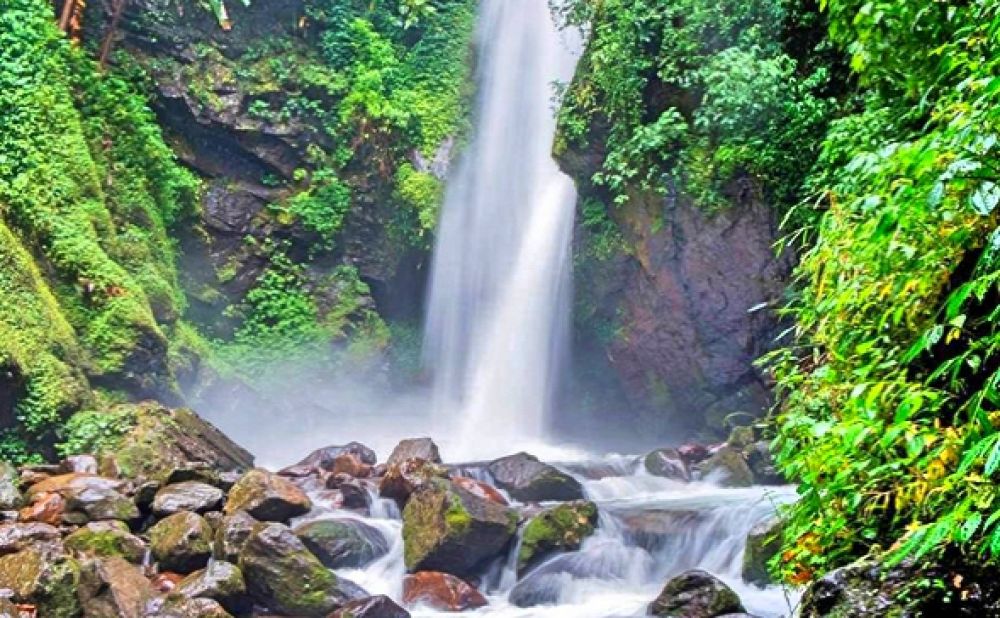
Kanchenjunga Falls, located on the way to Pelling, is one of the most spectacular waterfalls in Sikkim. Named after the mighty Kanchenjunga mountain range that forms its backdrop, this waterfall cascades down from a great height, creating a mesmerizing natural spectacle that attracts visitors throughout the year.
The waterfall originates from the glaciers of Mount Kanchenjunga and flows through rocky terrain before plunging down into a deep gorge. During the monsoon season, the waterfall is at its most powerful, with water thundering down with tremendous force. In winter, the volume decreases, but the surrounding snow-covered landscape creates a different kind of beauty.
What makes Kanchenjunga Falls special is its accessibility and the viewing platforms that have been constructed for visitors. The mist created by the falling water often creates rainbows on sunny days, adding to the magical atmosphere. The area around the waterfall has been developed with basic amenities like parking, small shops, and viewing areas, making it comfortable for tourists to enjoy this natural wonder.
Beyond its natural beauty, Kanchenjunga Falls holds cultural significance for the local people. Many believe that the waterfall has spiritual energy and offer prayers here. The sound of the falling water, the fresh mountain air, and the stunning backdrop of the Himalayas create a deeply refreshing experience for visitors.
In conclusion, Kanchenjunga Falls is more than just a waterfall—it is a symbol of Sikkim's pristine natural environment and the life-giving power of the Himalayan waters. It represents the harmonious relationship between the people of Sikkim and their natural surroundings, making it an essential stop for anyone visiting this beautiful state.
Singshore Bridge, located near Pelling, is the highest suspension bridge in Sikkim and the second highest in Asia. This engineering marvel spans a deep gorge at a height of 220 meters (720 feet) and offers breathtaking views of the surrounding valleys and waterfalls.
The bridge is 198 meters long and connects two hills, providing a vital link for local villages while also becoming a popular tourist attraction. Walking across the bridge is an exhilarating experience, with the deep gorge below and panoramic views of the Himalayan landscape all around. The bridge sways gently with movement, adding to the adventure.
Singshore Bridge is not just a tourist attraction but also an important infrastructure project that has improved connectivity for remote villages in the area. Before its construction, villagers had to take long detours to reach the other side of the gorge. The bridge has significantly reduced travel time and has contributed to the local economy by facilitating tourism.
The area around the bridge is known for its natural beauty, with lush green forests, terraced fields, and several waterfalls visible from the bridge. The best time to visit is during clear weather when the views are unobstructed. Adventure enthusiasts often visit the bridge for photography and to experience the thrill of walking at such a height.
In conclusion, Singshore Bridge is more than just an engineering structure—it is a symbol of Sikkim's development while respecting its natural environment. It represents the balance between progress and preservation that characterizes Sikkim's approach to development, making it both a practical infrastructure and a popular tourist destination.
Rabi Dentse Park, located in Pelling, is a beautifully maintained garden that offers some of the best views of the Kanchenjunga range. The name 'Rabi Dentse' means 'hill of the rising sun' in the local language, and true to its name, the park is particularly beautiful during sunrise when the first rays illuminate the snow-capped peaks.
The park features well-manicured lawns, flowering plants, and walking paths that allow visitors to enjoy the natural beauty while taking in the magnificent mountain views. Several viewpoints within the park provide unobstructed vistas of the Kanchenjunga range, making it a popular spot for photography, meditation, and simply relaxing in nature.
What makes Rabi Dentse Park special is its peaceful atmosphere and the careful landscaping that complements rather than competes with the natural surroundings. The park has sitting areas where visitors can spend hours watching the changing light on the mountains or reading a book in the tranquil environment. The local authorities have maintained the park with sensitivity to the ecological balance of the region.
Beyond its recreational value, Rabi Dentse Park serves as an example of Sikkim's commitment to creating public spaces that enhance quality of life while preserving natural beauty. The park is popular with both tourists and locals, especially in the early mornings when people come for walks and to practice yoga amidst the stunning Himalayan backdrop.
In conclusion, Rabi Dentse Park is more than just a garden—it is a celebration of Sikkim's natural beauty and a testament to the state's environmental consciousness. It provides a space where people can connect with nature, find peace, and appreciate the majestic Himalayas, making it an essential part of the Pelling experience.
Khecheopalri Lake, located near Pelling, is one of the most sacred lakes in Sikkim, revered by both Buddhists and Hindus. This oval-shaped lake is surrounded by dense forests and is believed to have wish-fulfilling powers, attracting pilgrims and tourists alike.
The lake is considered so sacred that not a single leaf is allowed to float on its surface for more than a few moments. According to local belief, birds immediately pick up any leaves that fall into the lake, keeping the water pristine. This phenomenon has made the lake famous and adds to its mystical aura.
For Buddhists, Khecheopalri Lake is associated with Guru Rinpoche (Padmasambhava), who is believed to have blessed the lake. For Hindus, the lake is associated with Lord Shiva and Goddess Parvati. The lake is part of the Buddhist pilgrimage circuit of Sikkim, which includes the Yuksom Tashiding trail.
Visitors to Khecheopalri Lake must walk about a kilometer from the road through a beautiful forest path to reach the lake. The peaceful atmosphere, the sound of prayer flags fluttering in the wind, and the spiritual energy of the place create a deeply moving experience. There is a viewpoint above the lake that offers a complete view of its perfect oval shape.
In conclusion, Khecheopalri Lake is more than just a water body—it is a living symbol of Sikkim's spiritual heritage and environmental consciousness. It represents the deep connection between nature and spirituality in Sikkimese culture and continues to inspire awe and devotion in all who visit this sacred site.
Pelling is not just a tourist town but also a gateway to experiencing Sikkim's natural wonders and cultural heritage. With its breathtaking mountain views, sacred sites, and adventure opportunities, Pelling rightfully earns the title of the "Scenic Wonder", making it one of the most beloved destinations in Sikkim for nature lovers and spiritual seekers alike.
Namchi, meaning 'sky high' in the local language, is the district headquarters of South Sikkim and has emerged as a major cultural and pilgrimage destination. Located at an altitude of 1,315 meters, Namchi offers a unique blend of spiritual tourism, cultural experiences, and natural beauty, making it one of Sikkim's fastest-growing towns.
Namchi is much more than just the Cultural Capital — it is a town of spiritual significance, natural beauty, and harmonious coexistence. With its majestic religious monuments, cultural diversity, and warm hospitality, Namchi stands as a symbol of Sikkim's unique identity as a land where different faiths and cultures thrive together in peace.
Ravangla, located in South Sikkim, is a beautiful hill station known for its serene environment, panoramic views, and spiritual atmosphere. Situated at an altitude of 2,200 meters, Ravangla offers a peaceful retreat amidst tea gardens, forests, and the majestic Himalayas, making it an ideal destination for those seeking tranquility and natural beauty.
Ravangla is not just a hill station but also a sanctuary for peace and spiritual rejuvenation. With its majestic Buddha statue, ancient monasteries, and breathtaking natural beauty, Ravangla truly reflects the essence of Sikkim as a land of peace, spirituality, and environmental consciousness. Its title as the Serene Hill Station highlights both its natural beauty and its spiritual significance.
Yuksom, located in western Sikkim, is popularly known as the "Historical Village" because it was the first capital of Sikkim and the place where the first Chogyal was crowned. This picturesque village serves as the gateway to the Kanchenjunga National Park and offers a perfect blend of history, culture, and adventure tourism.
Yuksom stands as a living museum of Sikkim's royal history, spiritual traditions, and natural heritage. From the historic coronation site to the ancient monasteries and the gateway to Kanchenjunga National Park, the village reflects the grandeur of Sikkim's foundation as a Buddhist kingdom. Its rich historical significance, cultural treasures, and natural beauty make Yuksom rightfully known as the Historical Village and one of Sikkim's most important heritage sites.
The cities and towns of Sikkim reflect the diverse character of this Himalayan state. While Gangtok showcases administration and modernity, Pelling offers scenic wonders, Namchi represents cultural richness, Ravangla provides serene retreats, and Yuksom preserves historical heritage. Together, these destinations present a perfect balance of nature, culture, spirituality, and adventure, making Sikkim one of India's most unique and enchanting states.
The fashion of Sikkim is deeply rooted in its diverse ethnic traditions, Himalayan environment, and Buddhist heritage. Clothing in the state reflects practicality, cultural identity, and a strong sense of community pride. From traditional ethnic costumes to contemporary adaptations, Sikkim's fashion scene offers a perfect blend of heritage and modern style, adapted to the mountainous terrain and cool climate.
Sikkim's traditional men's attire reflects the state's ethnic diversity, practical needs of mountain life, and cultural pride. It varies across different communities - Bhutia, Lepcha, and Nepali - each with distinct traditional costumes. Even today, during festivals, weddings, and cultural events, men proudly wear these traditional outfits to honor their ethnic roots and Sikkimese identity.
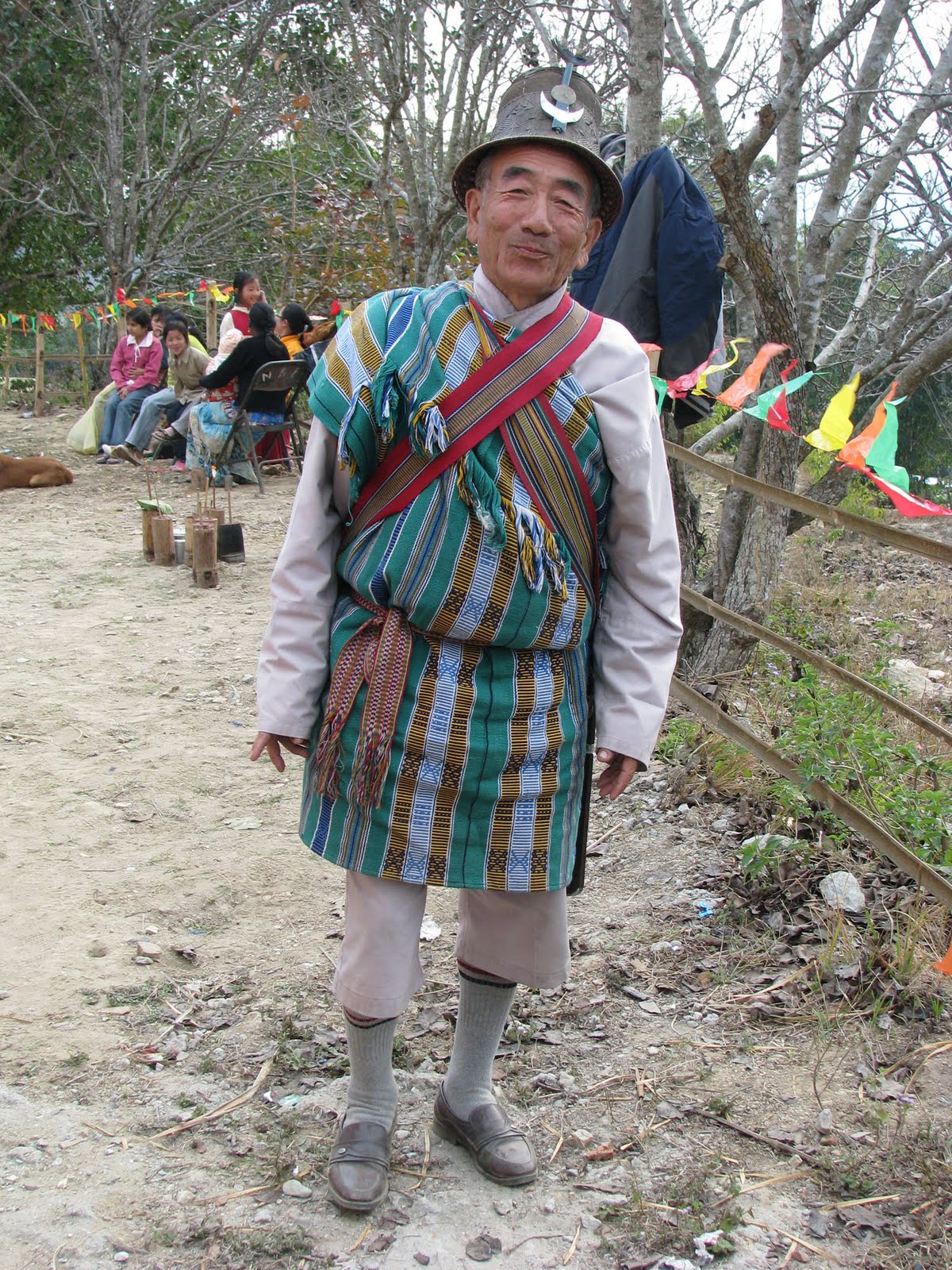
Traditional men's fashion in Sikkim is a beautiful representation of the state's ethnic diversity and cultural harmony. From the practical Bakhu of the Bhutias to the distinctive Thokro-Dum of the Lepchas and the elegant Daura-Suruwal of the Nepalis, each traditional costume tells the story of Sikkim's multicultural society living in harmony amidst the Himalayas.
The traditional attire of Sikkimese women is a vibrant expression of cultural identity, feminine grace, and ethnic diversity. From the elegant Kho of the Bhutia women to the distinctive Dumvun of the Lepchas and the beautiful Kurta-Sari of the Nepali women, Sikkimese women's fashion showcases both beauty and cultural significance. These outfits are worn proudly during festivals, weddings, and cultural ceremonies, each telling a story of the wearer's community heritage.
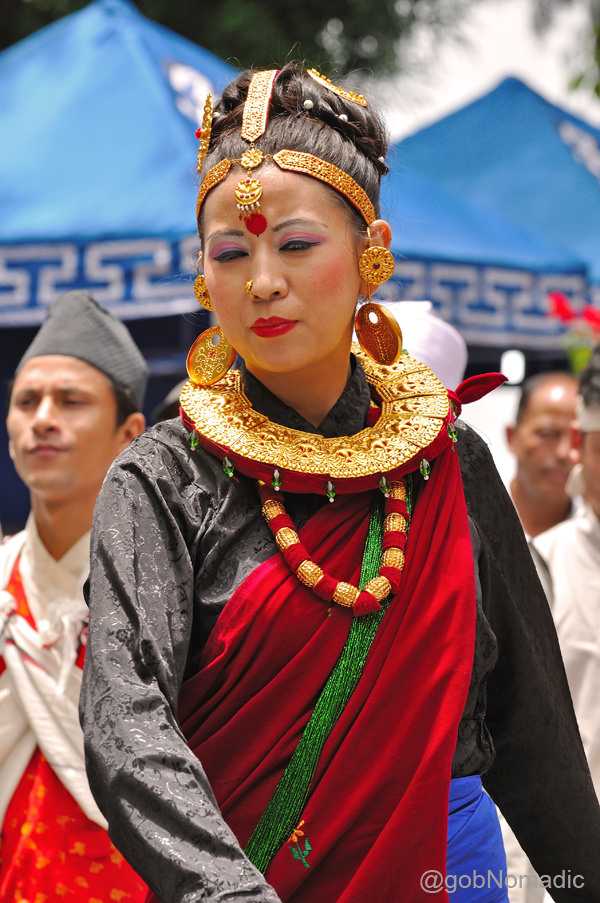
Traditional women's fashion in Sikkim is a beautiful tapestry of the state's ethnic diversity and cultural richness. From the elegant Kho of the Bhutias to the distinctive Dumvun of the Lepchas and the graceful Kurta-Sari of the Nepalis, Sikkimese women's attire continues to reflect the rich heritage and proud identity of Sikkim's multicultural society. Each costume is not just clothing but a celebration of community identity, feminine grace, and cultural continuity.
Sikkim is renowned for its unique textile traditions that reflect its ethnic diversity, Himalayan environment, and cultural heritage. The state's textiles showcase skilled craftsmanship, symbolic patterns, and adaptation to the mountain climate, making them an integral part of Sikkimese identity and pride.
Sikkim's fabrics and textiles are a precious cultural heritage that represents the state's ethnic diversity, environmental adaptation, and artistic excellence. From the warm woolens of the high Himalayas to the elegant silks of ceremonial wear, and from the distinctive stripes of Lepcha weaves to the intricate patterns of Bhutia textiles, these fabrics not only clothe the people but also tell the story of Sikkim's multicultural society and its deep connection with the Himalayan environment.
While Sikkim is deeply rooted in traditional attire, modern fashion has made a significant impact, especially in urban areas like Gangtok and among the younger generation. Today, people blend Western clothing, contemporary Indian styles, and traditional elements to create a unique fashion identity. Sikkim's fashion scene reflects its cosmopolitan culture, youthfulness, and creativity while maintaining strong cultural roots.
Modern fashion in Sikkim is a dynamic blend of tradition and contemporary style. While urban youth embrace global trends, festivals and special occasions still honor Sikkim's diverse cultural heritage through traditional wear. This creative combination of old and new makes Sikkim a unique fashion landscape where traditional costumes evolve while maintaining their cultural significance, and where global influences are adapted to reflect Sikkim's unique identity as a modern Himalayan society.
Sikkim's fashion is a beautiful reflection of its ethnic diversity, cultural richness, and adaptation to the Himalayan environment. From the elegant traditional costumes of different communities to contemporary fusion wear in urban centers, the state's clothing heritage continues to evolve while preserving its unique identity. Sikkim's fashion not only expresses cultural pride but also demonstrates how traditional heritage can creatively adapt to modern times, maintaining its relevance while honoring the past. This dynamic fashion scene truly represents Sikkim's spirit of unity in diversity and its harmonious balance between tradition and modernity.